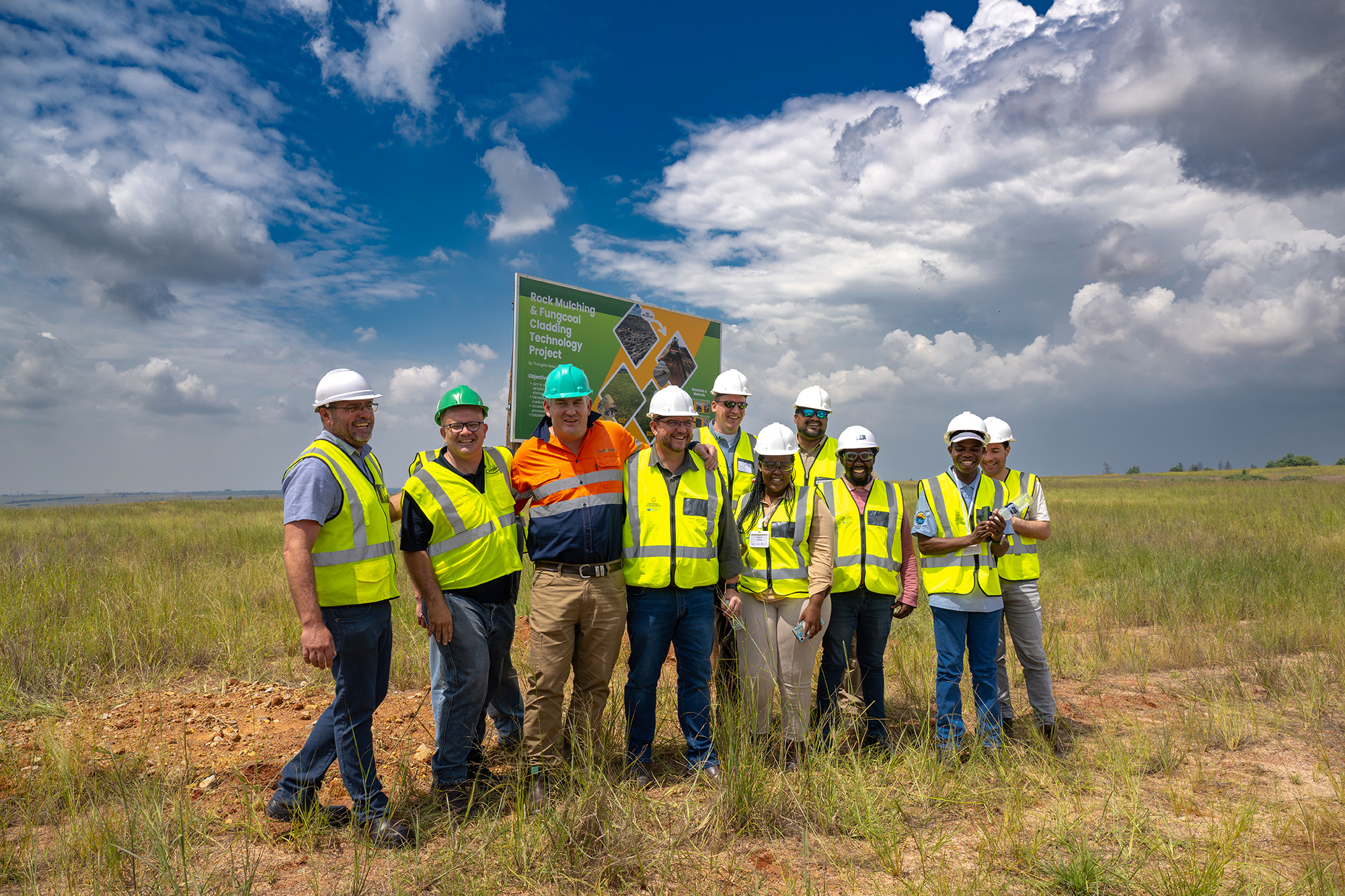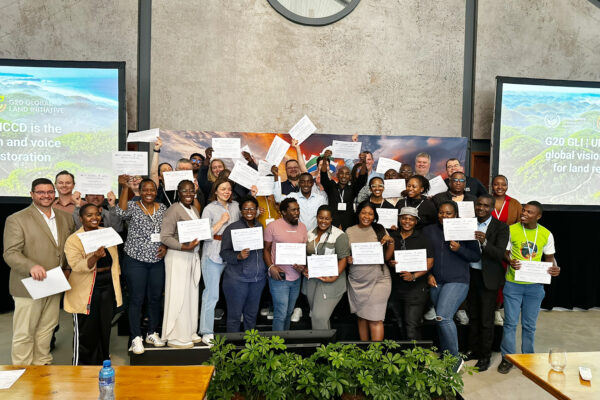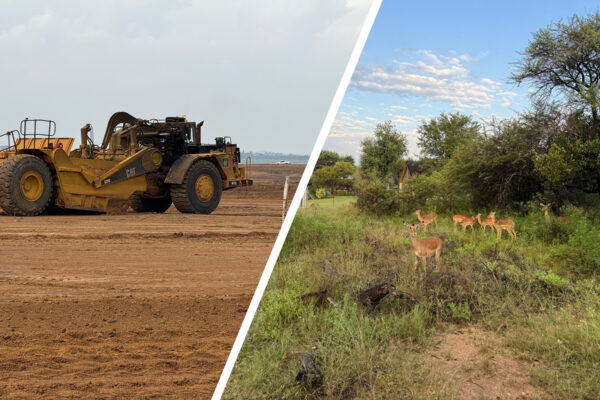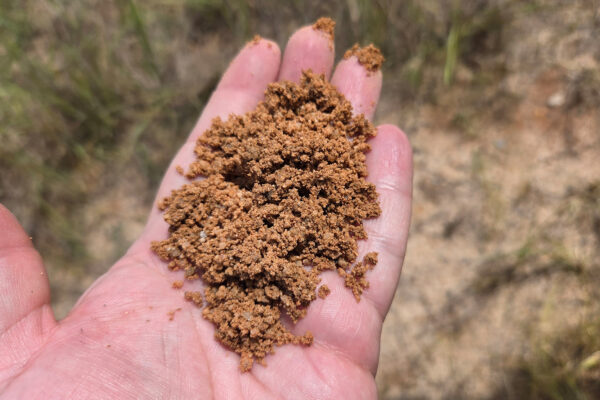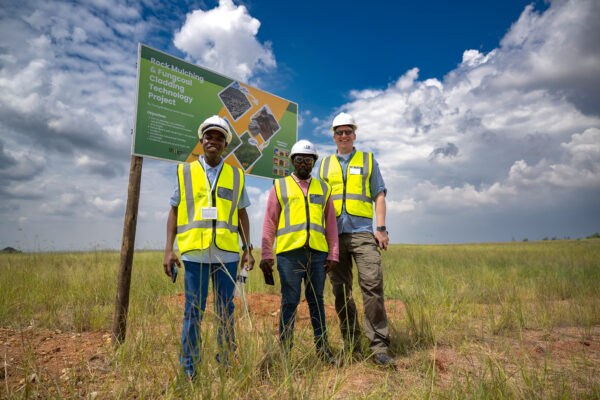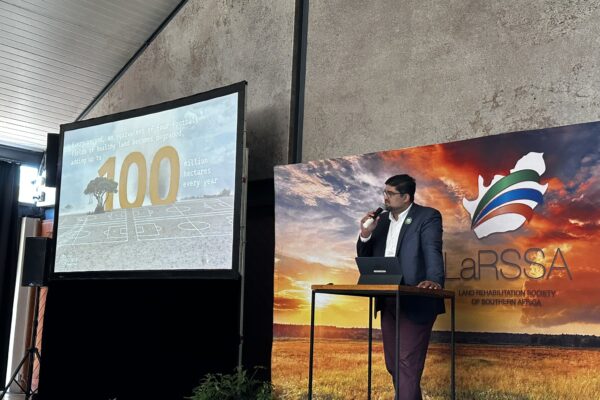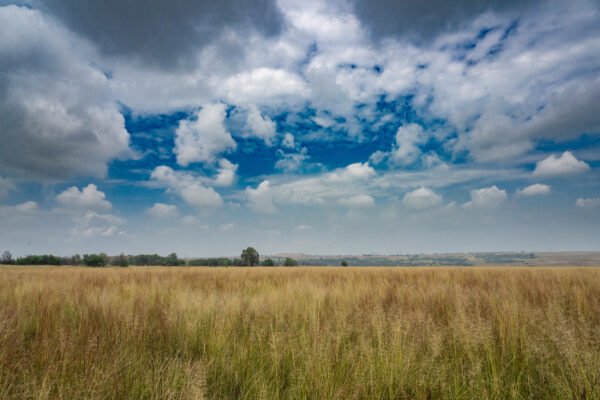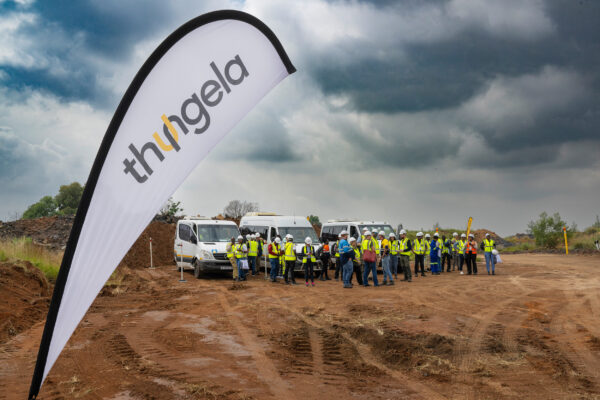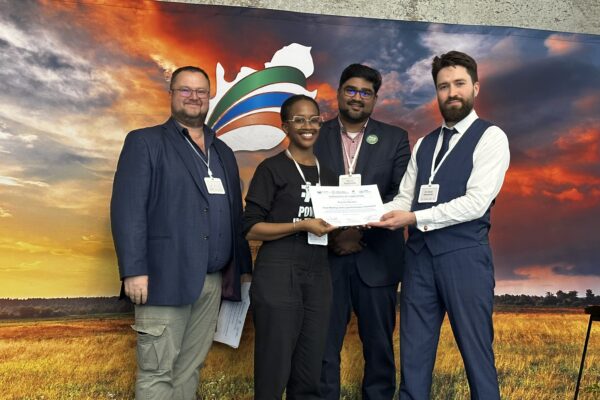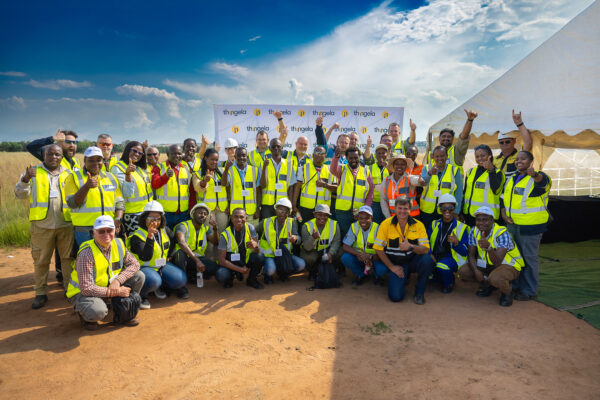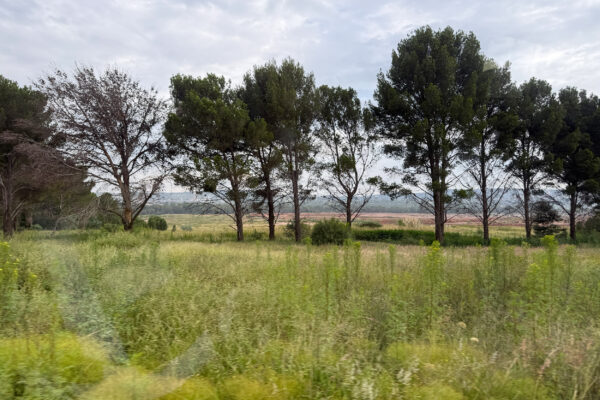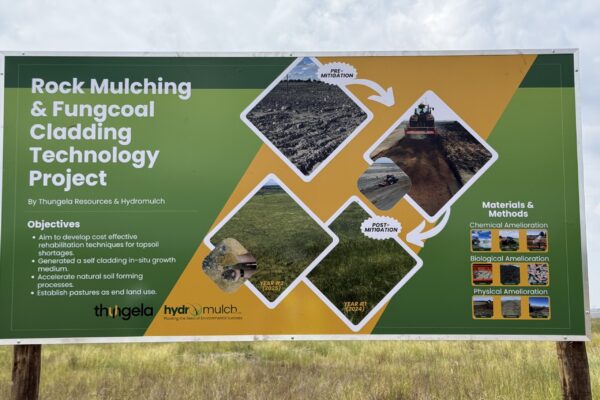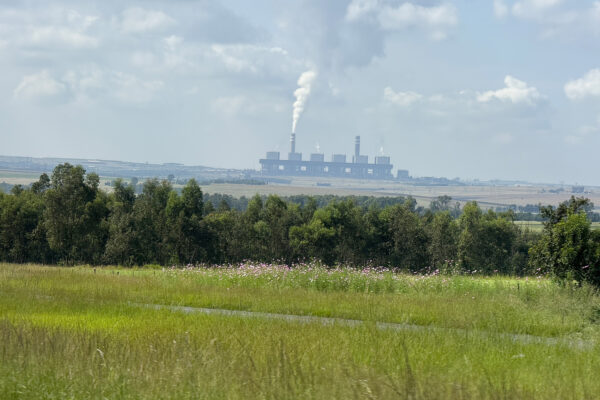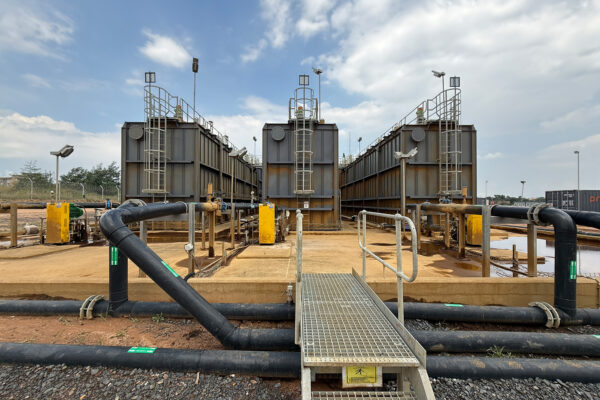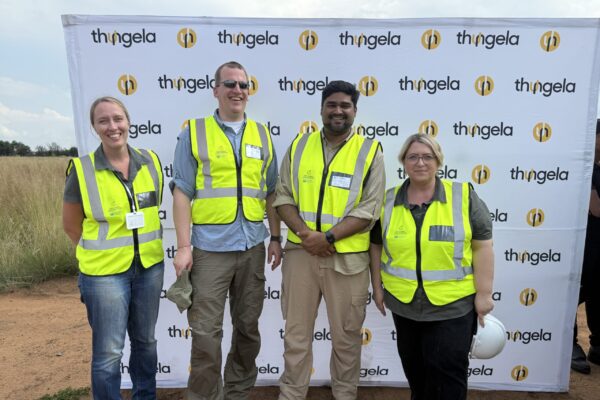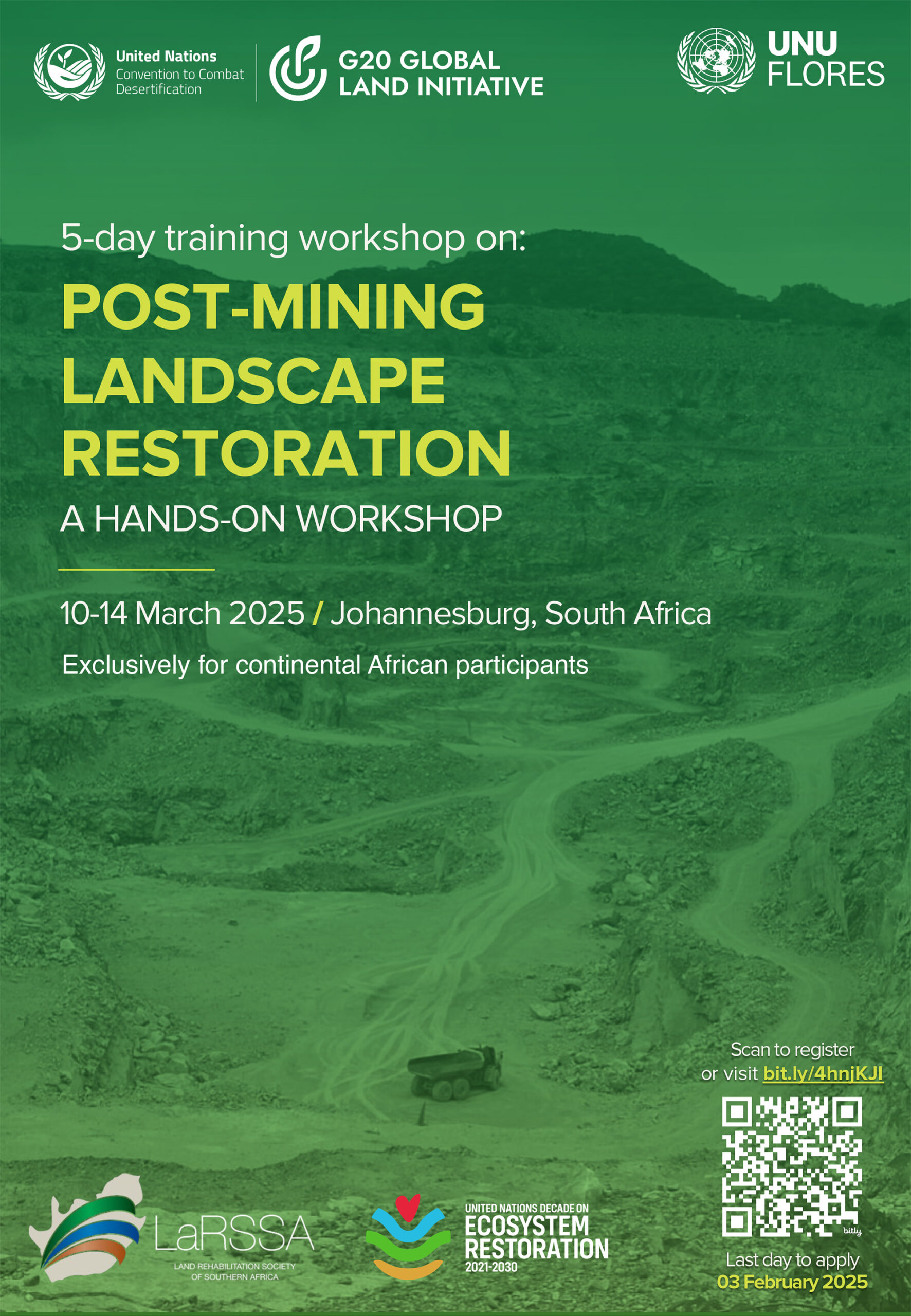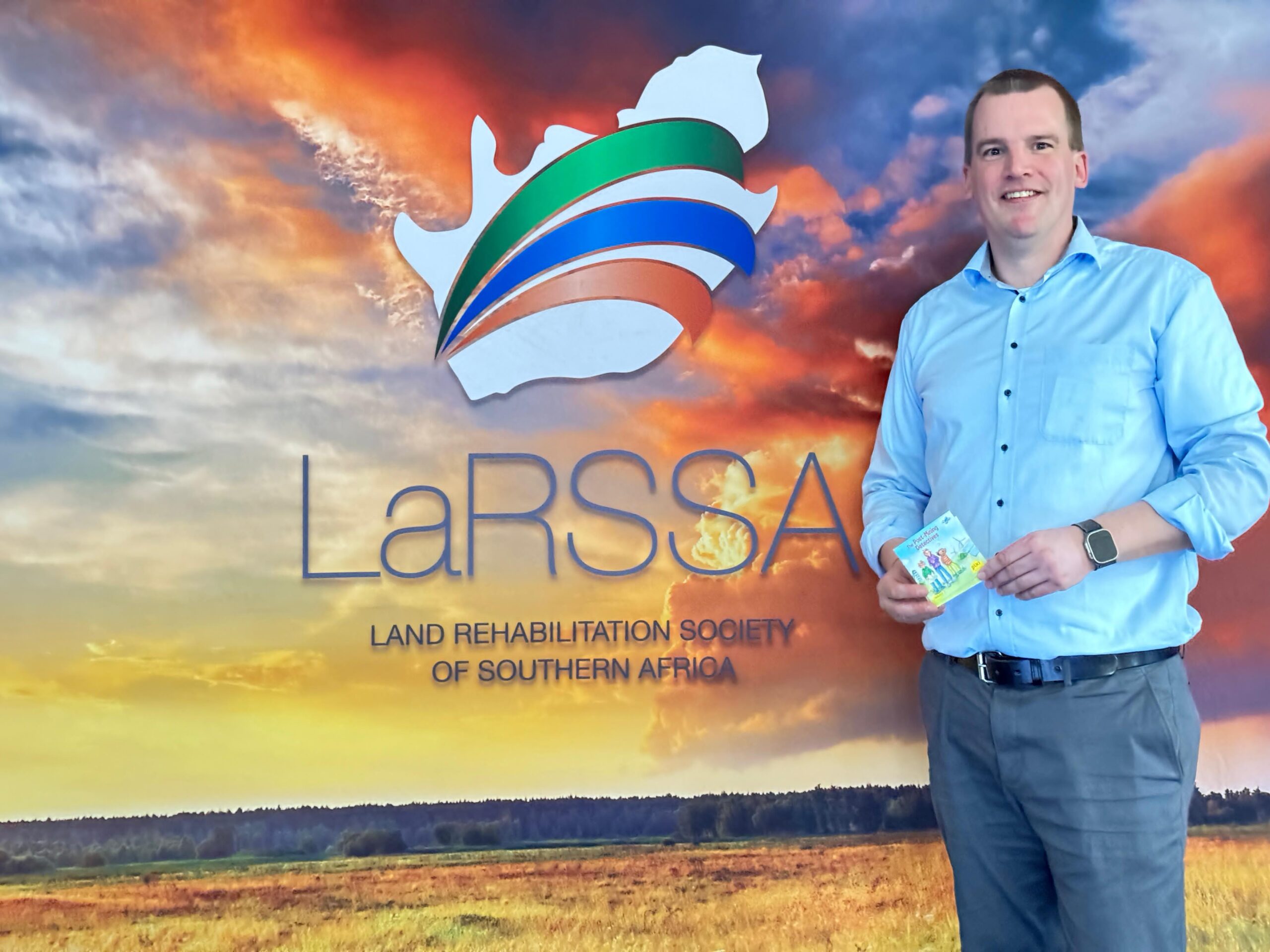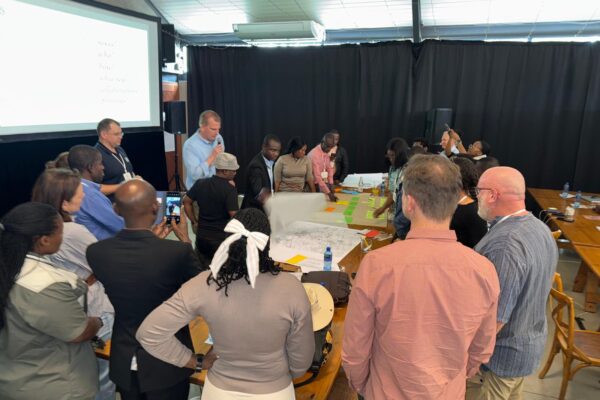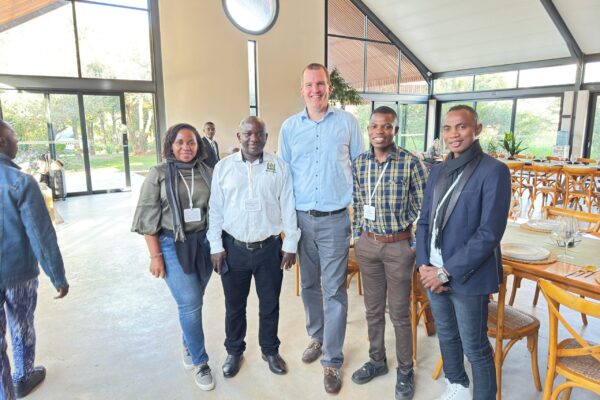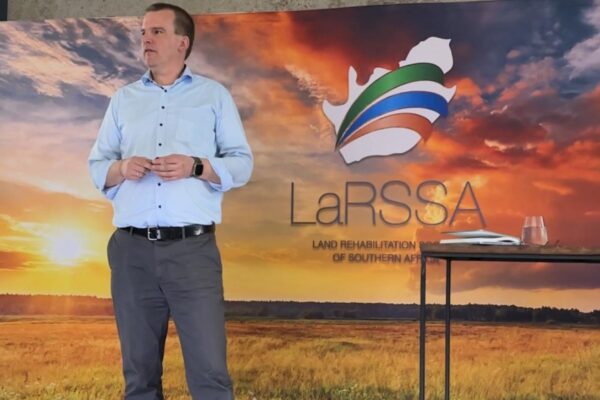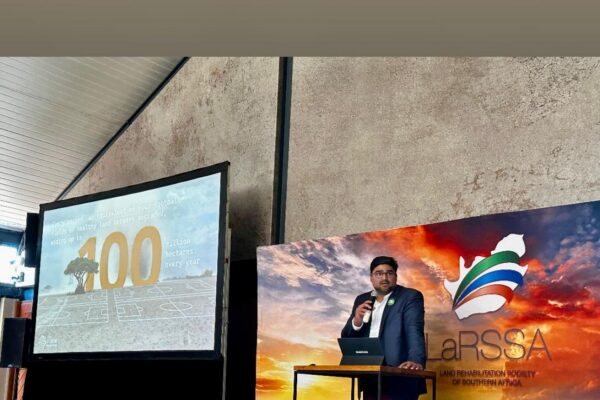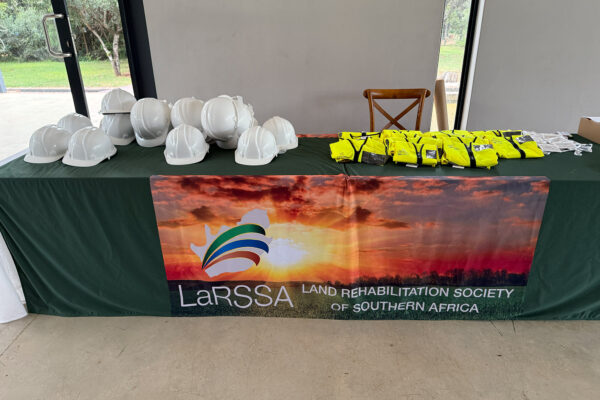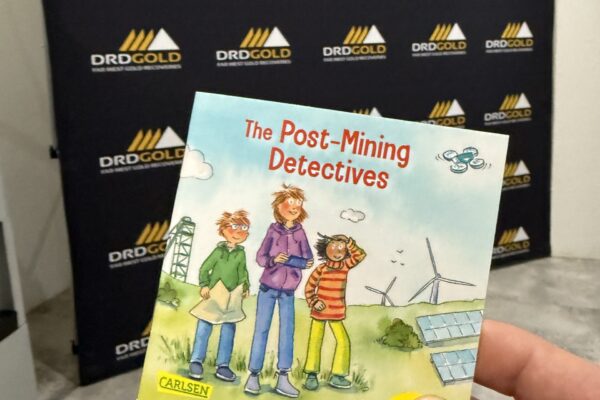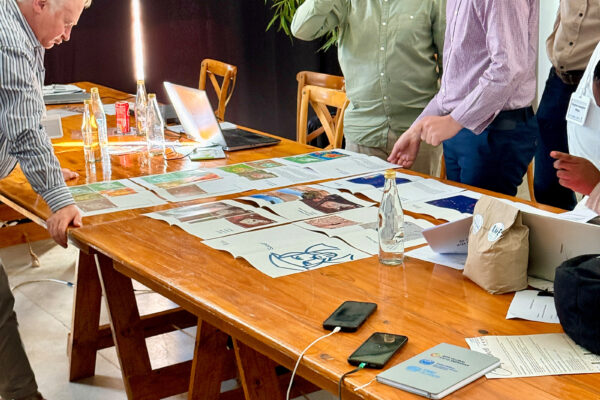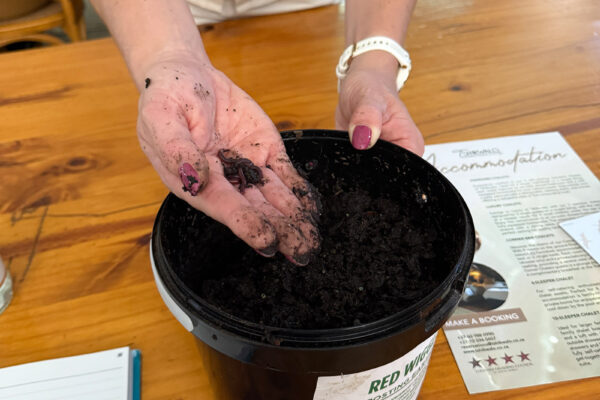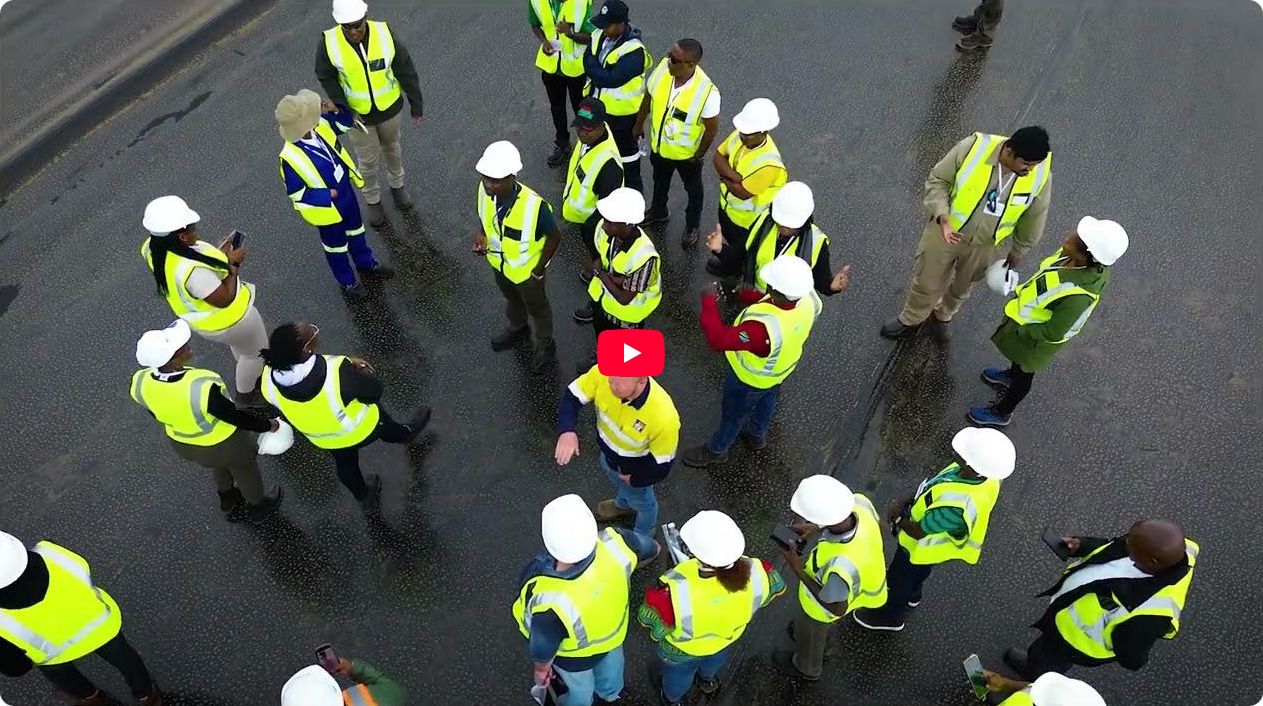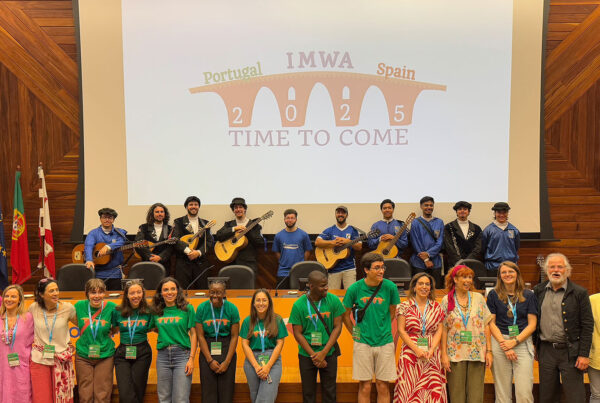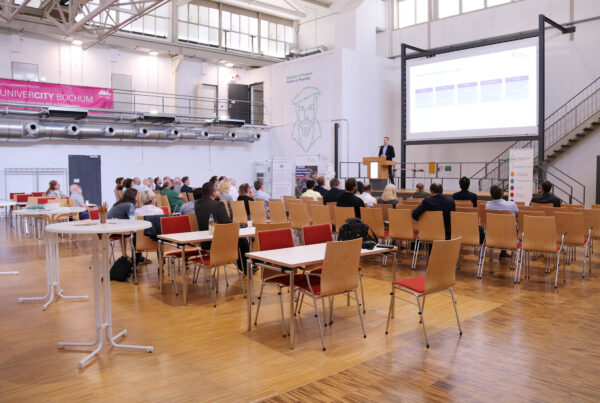From March 10 to 14, 2025, the Post-Mining Landscape Restoration Workshop took place in the Gauteng Province in South Africa. Organized by the UNCCD, the G20 Global Land Initiative, LaRSSA and UNU-Flores, participants were provided with a comprehensive overview of post-mining land restoration, including practical techniques and real-life examples.
In addition to theoretical lessons, the program includes field visits to learn techniques such as soil rehabilitation and ecosystem planning. Workshop highlights included excursions to mining companies that use innovative approaches to recultivate former mining areas on a large scale. The event, which took place during South Africa's G20 presidency this year, brought together participants from 18 countries (15 of which were African nations) - predominantly experts from mining supervision and industry. The workshop took place at a conference center in the middle of a pristine game reserve in the capital region of Pretoria.
Dennis Pulimittathu (FZN / G20 Global Land Initiative), in cooperation with the United Nations University – FLORES actively participated in the planning of the workshop, at which Prof. Dr. Tobias Rudolph from the FZN also provided on-site knowledge on post-mining monitoring.
Increasing demand for raw materials requires active ecological responsibility
The high and global urgency of the workshop topic is beyond question and results from the high and growing demand for raw materials of mankind. According to forecasts, the global demand for critical raw materials could increase by 300 to 1000 percent by 2050. At the same time, around 23 percent of soils in the Global South are already degraded, which underlines the importance of renaturation measures in an international context, explains Dennis Pulimittathu.
Thus, the workshop was an important impetus for responsible raw material extraction and soil remediation. It enabled the participants to immerse themselves in the topic of the renaturation of post-mining landscapes and covered ecological, economic and land use-related aspects.
Impressions from South Africa: Prof. Dr. Tobias Rudolph talks about his experiences
What was your experience of the workshop in South Africa? What were the highlights and what was the thematic focus?
Prof. Dr. Tobias Rudolph: The experience was very good! It was a totally exciting workshop with really interesting participants. The focus was on the issue of restoring former mining regions to a near-natural state. In English, this is referred to as “rehabilitation”, but there is no direct translation into German. The highlights, in addition to the very good exchange in the workshop, were the two visits to companies in South Africa: firstly, the visit to DRD Gold, which is clearing old gold tailings piles and thus removing the old, bad piles. And secondly, the Mpumalanga coalfield. Here, the Tungela company rehabilitates old open-cast mines and then hands the land over to the local communities as grassland or farmland.
What did you talk about specifically?
Prof. Dr. Tobias Rudolph: On monitoring in the mining life cycle and the use of open geodata - including remote sensing data for mining and post-mining monitoring. I was able to show that monitoring is also possible from a distance of 11,000 km.
What lessons have you learned from your stay in South Africa?
Prof. Dr. Tobias Rudolph: The first learning effect was the size of the mining footprint in Africa - and the associated economic and socio-economic implications if individual mining operations close. I also took away the realization that the complete consideration of the mining life cycle, as we do in Germany, is not very widespread and that we have really good ideas with our post-mining measures.
Many nations - especially from southern Africa - took part in the workshop. How was the FZN perceived by the participants?
Prof. Dr. Tobias Rudolph: Very good! It was highly appreciated how integrated we approach the issues and what measures we implement. It was particularly noted that we bring together technical and socio-economic aspects.
Could solutions for urgent future issues of humanity or for achieving the UN goals be experienced on site?
Prof. Dr. Tobias Rudolph: Definitely! This was particularly evident during the field trips and was also impressively demonstrated by the company representatives.
Dennis Pulimittathu explains the ecological and economic relevance of mining and the raw materials industry worldwide: "The raw materials industry contributes around USD 3.2 trillion to global GDP, but causes enormous environmental destruction. The workshop underlined the need for fair resource use and scientifically sound renaturation." The venue and continent for the event was well chosen.
As a continent rich in natural resources, Africa's commitment to soil remediation is crucial - not only to protect the environment, but also to secure resilient livelihoods, emphasizes workshop leader Dennis Pulimittathu. Africa therefore has a central role to play in soil protection measures. The THGA's Post-Mining Research Center has been able to contribute decades of technical, practical and solution-oriented expertise to this task.
Der Workshop bot somit wertvolles internationales Knowhow, viele Einblicke in die aktuellen Herausforderungen der Landschaftsrestaurierung nach dem Bergbau und ließ die Teilnehmenden Erfahrungen und Innovationen der besuchten Unternehmen vor Ort kennenlernen.
© Land Rehabilitation Society of Southern Africa
The program combined three days of theoretical training and interactive sessions with two days of field trips to rehabilitated coal mines and gold recovery sites.
Based on the Nexus approach practical strategies were developed for: Adaptive land use planning wurden praxisnahe Strategien entwickelt für:
- Adaptive land use planning
- Progressive renaturation (already during active promotion)
- Modern geospatial monitoring technologies
- Effective water management
- Without active change, a further 50 million hectares of land would be destroyed by mining by 2030.
- The workshop showed that a regenerative alternative - in which every ton of raw material extracted is coupled with proportional land restoration - exists.
- The need for immediate collective action is given, the path to a sustainable raw materials economy is clear and includes, among other things:
- Introduction of closed-cycle systems in mining
- Mandatory renaturation guarantees on a scientific basis
- Geospatial community monitoring for compliance with requirements
- Dennis Pulimittathu | Course leader
G20-GLI UNCCD / FZN - Dr. Alexey Alekseenko | Course leader
UNU-FLORES - Theresa Jansen van Rensburg | Course coordinator
LaRSSA - Hlumelo Marepula | Course coordinator
LaRSSA - Konrad Krüger | Course coordinator
LaRSSA
Excursion 1: DRD Gold – Carletonville (Gauteng)
An important part of the visit was a tour of a new Regional Tailings Storage Facility (RTSF), which uses innovative techniques to store and process mining waste. Other TSFs were visited to take a closer look at the progress and techniques for environmental restoration following the extraction of resources.
Ein wichtiger Bestandteil des Besuchs war die Besichtigung einer neuen Regional Tailings Storage Facility (RTSF), bei der innovative Techniken zur Lagerung und Aufbereitung von Bergbauabfällen genutzt werden. Weitere TSFs wurden besichtigt, um die Fortschritte und Techniken zur Umweltwiederherstellung nach dem Abbau von Ressourcen näher zu betrachten.
Excursion 2: Thungela – Mpumalanga Coal Field
The second visit took the group to Thungela, a service provider in the field of renaturation in the Mpumalanga Coal Field. Here, information was provided on the procedures for recultivating coal mining areas - with a particular focus on sustainable renaturation measures and the long-term ecological benefits of these efforts. One stop was made at the historic Kromdraai mine. The company Thungela showed the group how former mining areas can be converted back into natural habitats and the challenges that need to be overcome.
Further information
- UNU-FLORES (UNU Institute for Integrated Management of Material Fluxes and of Resources)
- UNCCD (United Nations Convention to Combat Desertification)
- LaRSSA (Land Rehabilitation Society of Southern Africa)
- G20 Global Land Initiative
- UN Decade on Ecosystem Restoration
- POST-MINING LANDSCAPE RESTORATION: Flyer (PDF)


